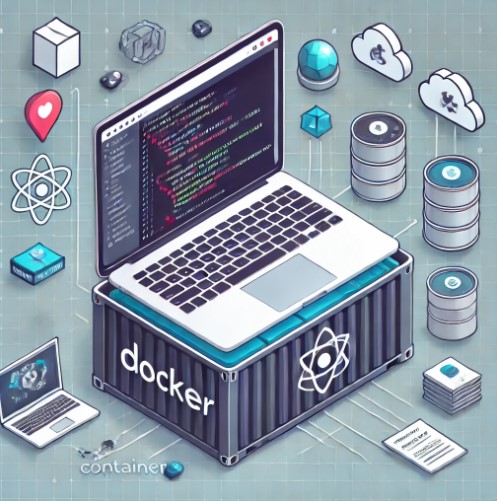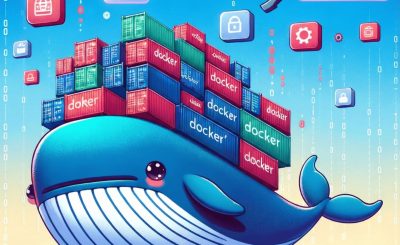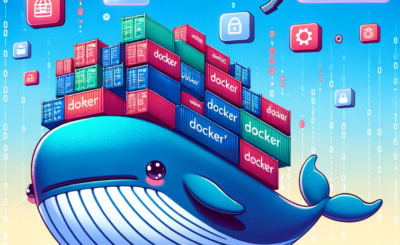Table of Contents
Introduction
In today’s fast-paced development environment, working in isolated and reproducible environments is essential. This is where DevContainers come into play. By leveraging Docker and Visual Studio Code (VS Code), developers can create consistent and sharable environments that ensure seamless collaboration and deployment across different machines.
In this article, we will explore the concept of DevContainers, how to set them up, and dive into examples that range from beginner to advanced. By the end, you’ll be proficient in using DevContainers to streamline your development workflow and avoid common pitfalls.
What is a DevContainer?
A DevContainer is a feature in VS Code that allows you to open any project in a Docker container. This gives developers a portable and reproducible development environment that works regardless of the underlying OS or host system configuration.
Why Use DevContainers?
DevContainers solve several issues that developers face:
- Environment Consistency: You can ensure that every team member works in the same development environment, reducing the “works on my machine” issue.
- Portable Development Environments: Docker containers are portable and can run on any machine with Docker installed.
- Dependency Isolation: You can isolate dependencies and libraries within the container without affecting the host machine.
Setting Up a Basic DevContainer
To get started with DevContainers, you’ll need to install Docker and Visual Studio Code. Here’s a step-by-step guide to setting up a basic DevContainer.
Step 1: Install the Required Extensions
In VS Code, install the Remote – Containers extension from the Extensions marketplace.
Step 2: Create a DevContainer Configuration File
Inside your project folder, create a .devcontainer folder. Within that, create a devcontainer.json file.
{
"name": "My DevContainer",
"image": "node:14",
"forwardPorts": [3000],
"extensions": [
"dbaeumer.vscode-eslint"
]
}- name: The name of your DevContainer.
- image: The Docker image you want to use.
- forwardPorts: Ports that you want to forward from the container to your host machine.
- extensions: VS Code extensions you want to install inside the container.
Step 3: Open Your Project in a Container
Once you have the devcontainer.json file ready, open the command palette in VS Code (Ctrl+Shift+P), search for “Remote-Containers: Reopen in Container”, and select your configuration. VS Code will build the Docker container based on the settings and reopen your project inside it.
Intermediate: Customizing Your DevContainer
As you become more familiar with DevContainers, you’ll want to customize them to suit your project’s specific needs. Let’s look at how you can enhance the basic configuration.
1. Using Docker Compose for Multi-Container Projects
Sometimes, your project may require multiple services (e.g., a database and an app server). In such cases, you can use Docker Compose.
First, create a docker-compose.yml file in your project root:
version: '3'
services:
app:
image: node:14
volumes:
- .:/workspace
ports:
- 3000:3000
command: npm start
db:
image: postgres:12
environment:
POSTGRES_USER: admin
POSTGRES_PASSWORD: password
Next, update your devcontainer.json to use this docker-compose.yml:
{
"name": "Node.js & Postgres DevContainer",
"dockerComposeFile": "docker-compose.yml",
"service": "app",
"workspaceFolder": "/workspace",
"extensions": [
"ms-azuretools.vscode-docker"
]
}
This setup will run both a Node.js app and a PostgreSQL database within the same development environment.
2. Adding User-Specific Settings
To ensure every developer has their preferred settings inside the container, you can add user settings in the devcontainer.json file.
{
"settings": {
"terminal.integrated.shell.linux": "/bin/bash",
"editor.tabSize": 4
}
}
This example changes the default terminal shell to bash and sets the tab size to 4 spaces.
Advanced: Creating a Custom Dockerfile for Your DevContainer
For more control over your environment, you may want to create a custom Dockerfile. This allows you to specify the exact versions of tools and dependencies you need.
Step 1: Create a Dockerfile
In the .devcontainer folder, create a Dockerfile:
FROM node:14
# Install additional dependencies
RUN apt-get update && apt-get install -y \
build-essential \
python3
# Set the working directory
WORKDIR /workspace
# Install Node.js dependencies
COPY package.json .
RUN npm install
Step 2: Reference the Dockerfile in devcontainer.json
{
"name": "Custom DevContainer",
"build": {
"dockerfile": "Dockerfile"
},
"forwardPorts": [3000],
"extensions": [
"esbenp.prettier-vscode"
]
}
With this setup, you are building the container from a custom Dockerfile, giving you full control over the environment.
Advanced DevContainer Tips
- Bind Mounting Volumes: Use volumes to mount your project directory inside the container so changes are reflected in real-time.
- Persisting Data: For databases, use named Docker volumes to persist data across container restarts.
- Environment Variables: Use
.envfiles to pass environment-specific settings into your containers without hardcoding sensitive data.
Common Issues and Troubleshooting
Here are some common issues you may face while working with DevContainers and how to resolve them:
Issue 1: Slow Container Startup
- Solution: Reduce the size of your Docker image by using smaller base images or multi-stage builds.
Issue 2: Missing Permissions
- Solution: Ensure that the correct user is set in the
devcontainer.jsonor Dockerfile using theUSERcommand.
Issue 3: Container Exits Immediately
- Solution: Check the Docker logs for any startup errors, or ensure the
commandin the Dockerfile ordocker-compose.ymlis correct.
FAQ
What is the difference between Docker and DevContainers?
Docker provides the underlying technology for containerization, while DevContainers is a feature of VS Code that helps you develop directly inside a Docker container with additional tooling support.
Can I use DevContainers with other editors?
Currently, DevContainers is a VS Code-specific feature. However, you can use Docker containers with other editors by manually configuring them.
You can commit your .devcontainer folder to your version control system, and other team members can clone the repository and use the same container setup.
Do DevContainers support Windows?
Yes, DevContainers can be run on Windows, MacOS, and Linux as long as Docker is installed and running.
Are DevContainers secure?
DevContainers inherit Docker’s security model. They provide isolation, but you should still follow best practices, such as not running containers with unnecessary privileges.

Conclusion
DevContainers revolutionize the way developers work by offering isolated, consistent, and sharable development environments. From basic setups to more advanced configurations involving Docker Compose and custom Dockerfiles, DevContainers can significantly enhance your workflow.
If you are working on complex, multi-service applications, or just want to ensure environment consistency across your team, learning to master DevContainers is a game-changer. With this guide, you’re now equipped with the knowledge to confidently integrate DevContainers into your projects and take your development process to the next level.
For more information, you can refer to the official DevContainers documentation or check out this guide to Docker best practices. Thank you for reading the DevopsRoles page!

